How We Made A Feature Film For $200
Yes, this really happened! Marty McGowan tells us how he did it with his latest feature, Ava.

Ava
Written by Marty McGowan
My name is Marty, I’m a filmmaker based out of Reading, PN, about 90 minutes outside Philadelphia. I wrote and directed a film called Ava, a character drama that follows a 17-year-old girl after the sudden death of her closest friend, and the grief that follows.
From the day I started writing, to the day it premiered, four years passed. In that time, we wrote, cast, had a pandemic, rewrote, shot, edited, and premiered a feature film that ended up costing less than an Xbox.
Keep reading below for how we pulled this off.
Part 1: Background
In order to understand how Ava came about, and how we actually made this thing for such an extreme budget, I think it’s important to (briefly) go over my film experience leading up to it, and how Ava came to be.
For context, I am 27 years old, entirely self taught, and have made any and all connections I may have through luck and the internet.
Before I was ever able to buy a camera for myself, I soaked up as much information as I possibly could. Luckily, YouTube was invented, and a ton of documentaries about the making of films were uploaded to the site, including the making of featurettes for Walking With Dinosaurs, The Alien Quadrilogy, Star Wars, and anything else you can imagine.
After I graduated high school, having spent around 10 years of YouTube University, I finally saved up to buy a Canon T3i. Armed with all the knowledge I had absorbed, I went about making my first two short films.
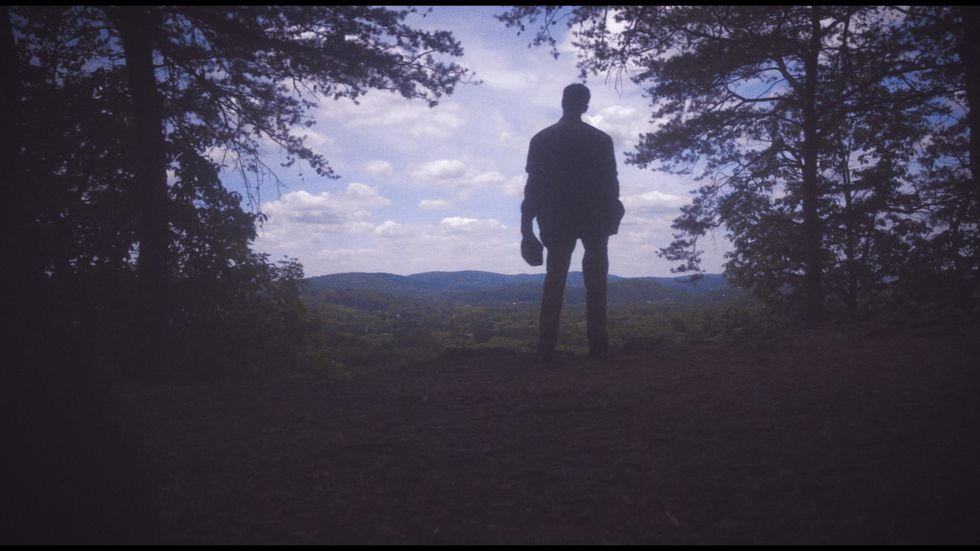
Abigail (2018) was my first film, and with it came a dozen other firsts. The film follows a young woman named Abigail, who has just moved into a new house. In it, she discovers a trunk of old belongings from a man named Joel, and follows that thread to unravel a decades-old mystery.
The film was written on a whim at the end of 2015 with the idea being to follow two parallel stories that effect one another in some way. It runs for 28 minutes, which is about three times as long as any first time film should run. It is overlong and ambitious, and it sounds awful. I have a soft spot for it none-the-less.
Watch Abigailhere.
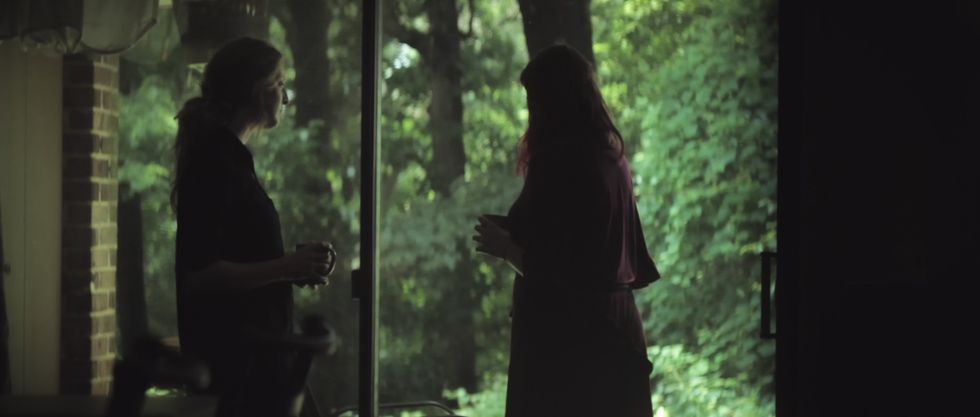
Same camera, same gear, second film.
Mockingbird (2020) followed, and with it, I attempted to broadly improve on everything that fell short in Abigail: better sound, more fleshed-out characters, a stronger focus on performances, a more ambitious plot, and a monstrous 48-minute runtime.
This film follows Carla, a private detective hired by a grieving mother to investigate the mysterious death of her young son a year earlier.
While investigating, Carla discovers a distressing pattern of child deaths dating back to the early 1980’s. While this film was an effort to make up for the shortcomings of Abigail, I made a major mistake: I had set a shoot date ahead of completing the script. Predictably, when that date came the script was not in the place I wanted it to be. As a result, despite what I think are very strong performances and well done individual scenes, the whole is actually less than the sum of its parts.
Mockingbird can be watched here. Viewer discretion is advised.
If Abigail was a C+ short film, Mockingbird earned the same grade on a much more complicated test. This left me frustrated, as I had wanted to make something great, not good with qualifiers.
At the end of 2019, while in post for Mockingbird, and unable to create an idea I liked for myself, my wife came to me with a proposition: take the unfinished book she’d been working on, and use it to make a film. The book was a great starting point for what I felt might be a really compelling story, but I wasn’t sure if I was the person to do it.
At that point I had no idea if what would become Ava would be another long short film, or if it would be a feature, so I took the naive approach that if Mockingbird could be 48 minutes long and shot in about four days, we could shoot a feature film in about eight, and chose not to worry about the runtime until I’d nailed down a script. More on that later.
Part 2: Writing, The First Time
Unlike my previous films, which both relied on a mystery slowly revealed to the audience, Ava is a character study. There wasn’t a whole lot of plot to hang onto for structure, so it needed to be a minute-by-minute experience rather than a build up to some inevitable third act climax or revelation.
Breaking it down, the film is about grief, depression, and the suffocating isolation of it all. It’s also about relationships, new and old, and how they change after tragic events.
How do I put those ideas into a film when so much of the agony is experienced internally?
There’s also the personal hesitancy. I am not a 17-year-old girl, I’ve never lost such a close friend to tragedy, and I am not an only child with an absent mother.
That being said, I'm also not a private detective investigating missing children, or a young woman happening across an old trunk. I decided that if I was going to try it, I would have to write as honestly as I could. If it failed, it would fail privately. If it was ever going to succeed, I needed to be truthful.
So I got started. The first thing I did to try and get a handle on the story was get out every tangible detail I could onto colored and labeled index cards, a first for me, and broadly similar to the process from this video by Emily Diana Ruth that I had watched years earlier.
- Blue Cards - Story Events: Ava & Maggie meeting, Lexi’s death, the ending, etc.
- Red Cards - Character Bios: a brief bio with their birthdates, age, relationship to Ava, and Zodiac sign (I’m not a zodiac person, but there is one line in the film dealing with it and I wanted to make sure I had the information if I needed it).
- Yellow Cards - Ideas: Character motivations, shifts in perspective, and other more miscellaneous stuff that could be laid over top of the others.
The “first draft” of Ava, labeled March 2020, ran for 141 pages, about 30% longer than any rational first time feature script should. Noticing a pattern?
While it was never going to be the final page count, I figured this would paint enough of a picture of the final product while I trimmed the final draft for our Summer 2020 shoot.
Part 3: Casting
I had worked briefly as a photographer for a local community theater company back in 2017-2018. Most of the plays I shot for were fun plays, crowd pleasers like Rocky Horror or any number of Jr. plays for local kids.
One play I did shoot for was The Crucible, and from it I garnered half the cast of Mockingbird.
Several years later, as I’m working on Ava, I start to picture a young actress, Lysia Mogford, who had played the role of Abigail in The Crucible, and I’d found her performance engrossing. I had started to picture her as Ava in the scenes as I wrote them, which can be a dangerous thing if the person you’re picturing isn’t involved yet. So I decided to reach out.
I sent Lysia a DM on Instagram in February 2020, reintroducing myself, and telling them that I had this idea for a story. Luckily for me, she liked the idea, and with that the first cast member was secured.
Shortly thereafter, in the early parts of March 2020, I met with Lysia’s real-life friend, another actress named Olivia Gardella. Olivia and I spoke for a few hours, mostly me because I was very excited, and we had made tentative plans to meet up sometime later that spring to start rehearsing.
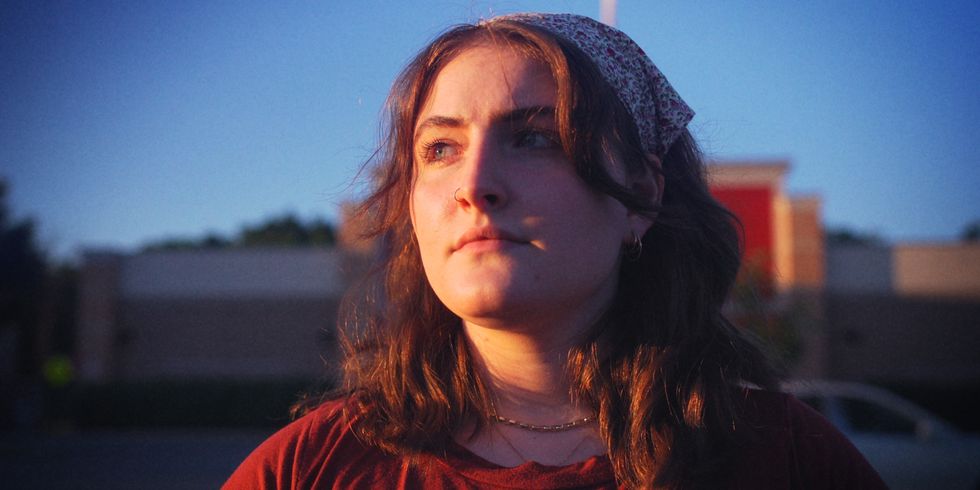
Part 4: Inevitable Pandemic Interlude, and Rewriting
This is the part where I tell you our plans were interrupted by the pandemic.
But instead of focusing on the fear and anxiety, I focused on the benefits.
The draft of Ava I had ready in summer of 2020 was nowhere near good enough for what I wanted. The film was well on its way to the same fate as Mockingbird, when the world was shut down. I was suddenly given an additional year to work on this script, and in addition had cast my two leads.
Over the next year, I tore the script apart, and restarted. We knew the bones of where the script would go, but now was the time to really dive in, and make sure that it was more than just wall-to-wall dramatic monologues.
This is where we got into performance and behavior, running some of the scenes on Zoom calls, and sending several novels worth of text messages back and forth for the duration.
As Spring 2021 came into view, we had a much stronger script, and the actors had a much much better hold of their characters. It would still change, but that final draft is almost exactly what played at the premiere over two years later.
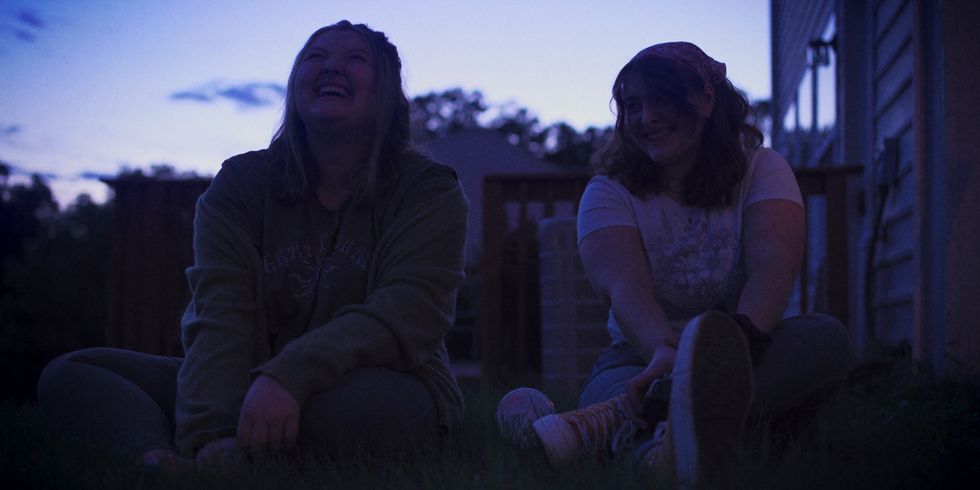
Part 5: Shooting
In order to shoot a film you need gear. Your gear is not the “thing” that is going to magically make your film good or not, but using a hammer for a job that requires a screwdriver is just going to backfire for everyone.
Depending on what I titled this article you may already know that I shot this film on a decade-old mirrorless camera. The A7S was chosen for its weight and lowlight capabilities, as well as the image quality which I think holds up very well. If I wasn’t able to make that purchase, I was fully prepared to shoot Ava on the T3i.
The most important aspect of this film for me, outside the writing and performances, was that it should not look or sound like it was made for what ended up being less than the cost of an Xbox. This required a lot of pre-shoot tests, hard work, and luck.
The Camera - The Sony A7S and Ninja V
There are many schools of thought on cameras. My thoughts are that while I understand that a camera like the T3i will never be able to stand up in a pixel-for-pixel, bit-for-bit battle with (your favorite cinema camera here), I also know that an audience really doesn’t care what the movie was shot on, as long as it’s good and sufficiently well shot.
I knew that whatever I chose needed to be lightweight and deliver a pleasing image in challenging lighting conditions, and I also knew that I couldn’t go out and spend $4000 plus on the latest and greatest 2020 camera to get that result.
In that spirit, in April 2020 I bought an original A7S on eBay, a camera I had been in love with since I’d first seen it years earlier.
I knew Ava was going to be shot using mainly available light, and wanted to use the low-light capabilities of the A7S to extend our shoot days. At that point the A7S3 did not exist, so the A7S2 was listed on eBay for more than $1500, while the original A7S listed for a third of that.
This left the question of 4K, which the original A7S cannot capture internally. At the time, and now, I don’t think 4K is nearly as important as the actual image quality, with dynamic range, color rendition, and low light quality taking priority. Months into the camera tests, I found a Ninja V on sale for the lowest price I’ve ever seen. With this I was able to shoot the film in 4K, ProRes LT, and reframe some shots without a perceptual quality loss.
Even with these conveniences, I stand by my major takeaway from Steve Yedlin’s Resolution Demo: the number of pixels is far less important than the quality of those pixels. Ava would be the same film regardless of resolution, and 1080p is enough on most screens. The final 2K DCP we screened at the festival on a 60-foot screen looked great.
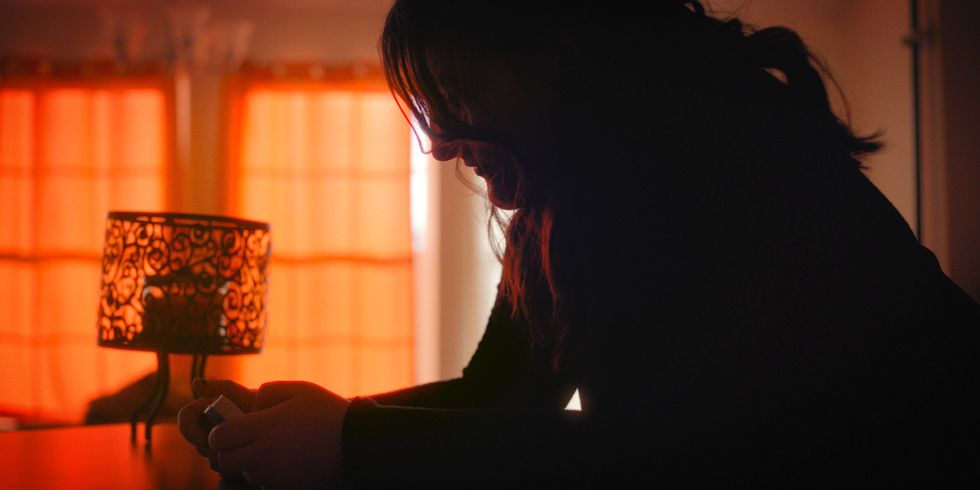
The Lenses - Rokinon 35mm T/1.5 and Helios 44-2
The workhorse lens for our shoot was the Rokinon 35mm T/1.5 lens. It is fast, clean, and controls flaring very well. I did not like those last two bits. For years I’d worked with either cheap lenses I’d intentionally “messed up”, or the venerable Helios 44-2 lens which distorts the image pretty famously.
However for Ava, I had decided to go almost 100% handheld, and the ergonomics of the unmodified Helios are a nightmare in motion, with the lens itself demanding a lot of attention to deliver a good performance.
I didn’t want this film to be about a lens, and with no money to afford a proper rehousing, I decided to instead relegate my beloved lens to a few select flashback shots (all shot on tripod), and work with the Rokinon which I eventually learned to love.
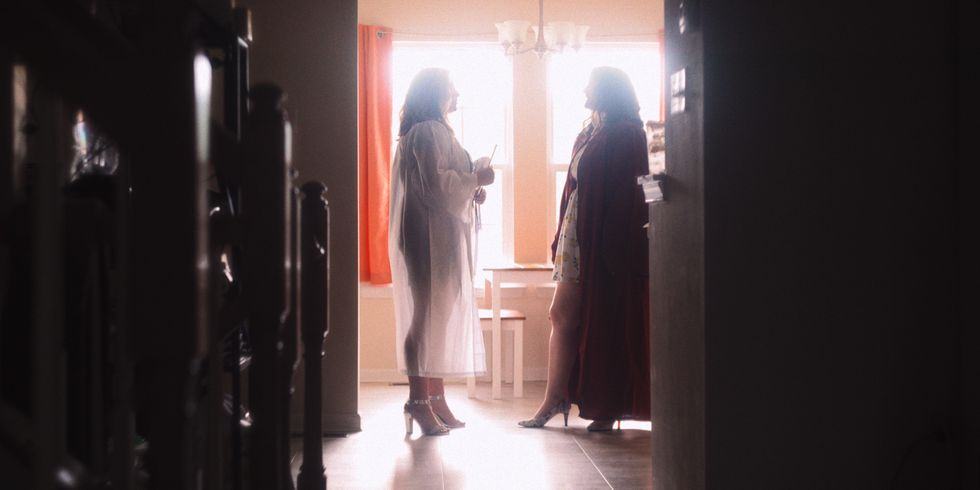
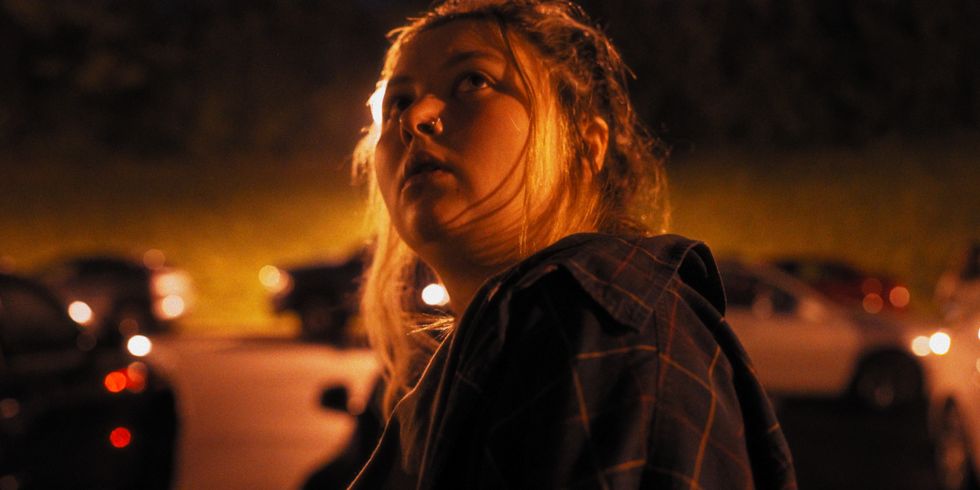
Settings
I did not use SLog. I did plenty of experiments with it early on, and there are some incredible things possible with this flavor of 8-bit SLog, but like the Helios, it demands a lot of attention to perform at its best and I didn't want to prioritize that over the performances of the actors.
I also did not use EOSHD Pro Color, which I have since purchased (big fan).
Instead, I ran a lot of really dull technical tests and dialed in settings that would give me a close approximation of the final look I wanted for the film in-camera, rather than trying to shoot very flat and create a look in post.
Again, the 8-bit signal put out by my camera has actual shortcomings (banding, compression artifacts) and avoidable shortcomings, like sallow and unflattering skin tones.
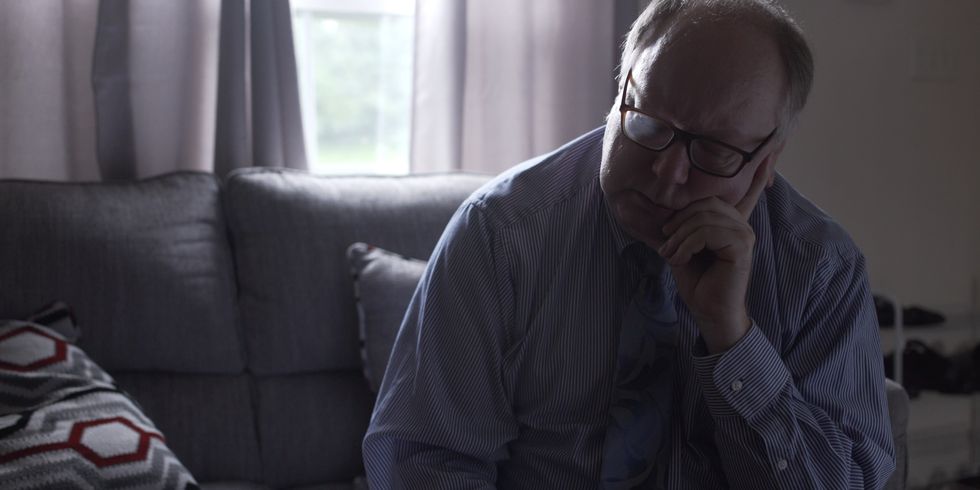
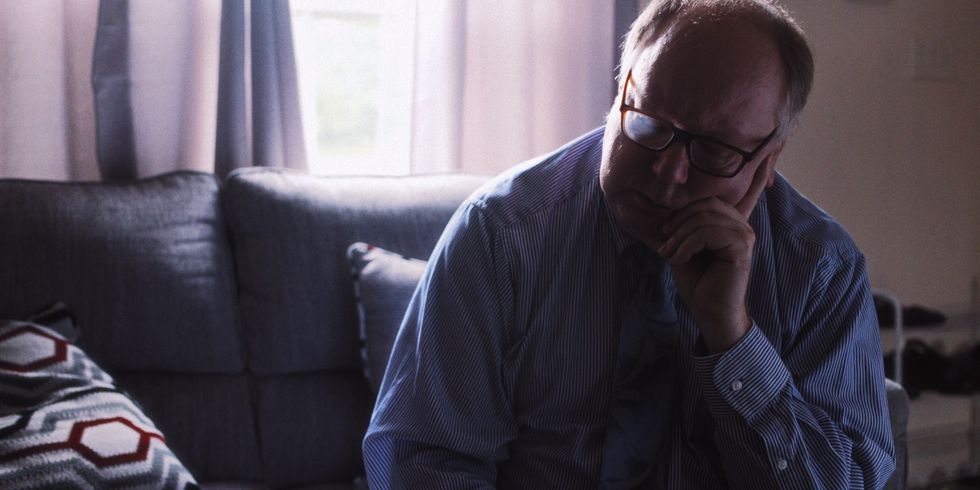
The settings for Ava are available here.
I’ve also written extensively about the look of Ava, so suffice to say that the rest of the articles at the above link should be able to answer any questions you may have about that.
Part 6: Directing On-Set
Before ever getting to set, I had extensive conversations with every person in my cast, and ran a few select scenes over Zoom. I wanted to know my cast as well as possible given the circumstances, and asked them explicitly what they did and did not like as an actor. I wrote notes for myself about each of them, and when they all hit the set, we all knew what to expect from one another.
In our case, the “crew” was myself on camera, and Austin, one of my oldest friends and composer for the film, on sound. Our cast would slate their own shots, sprint to a corner to hide the slate, then get to their marks to start the scene.
Once the day started, I would typically have my actors run the scene without the camera, two to three times. This was to get the dynamics flowing, get the words out properly, and to be able to freely interrupt without worrying about batteries, hard drives, or any of the other kit.
Once the rehearsals were done, we would get the camera and mics up, and run the scene. This part is largely the same as any other process, with myself and my cast preferring rolling resets. This is something I think I first saw as a kid watching the making of The Hobbit, where to mitigate the amount of down-time between takes, Peter Jackson had taken to not calling cut at all. Seeing as we were shooting digitally, like PJ on The Hobbit, I could roll for as long as we needed to get the scene right without unneeded breaks in-between.
This led to a small number of takes in general, but longer video clip lengths.
In August of 2021, after we had shot and taken a brief break to shoot this test footage for my next film, I began editing. I would be editing for the next 26 months.
Part 7: Editing a Feature with Davinci Resolve and Depression
It is impossible to talk about the extended editing process of Ava without getting personal. I’ve tried more than a few times.
I have depression. I have been aware of that depression since I was a very small child, right around the time I first figured out I wanted to be a filmmaker. It has been a constant fact in my life since then.
My particular flavor of depression makes it very difficult for me to justify spending the amount of time I need to edit a film, and makes me hate just about every choice I make.
For client work, I can always rely on the clients opinion and paycheck to motivate me. When it comes to a very complex passion project, it can be very hard to make any progress.
On Christmas Day of 2022, 16 months after starting the editing process, I started over. I didn’t delete anything, but I did put it all into a bin labeled “_old”, and created a new sequence in Davinci. A month later, I had an assembly cut. It was rough, it was ugly, and the audio sucked, but it was watchable from front to back for the first time.
In March of 2022, I had a chance meeting with someone who would very quickly become a crucial part of the story that got Ava finished: Santo Marabella.
Santo is a filmmaker, teacher, and all-around creative force in my city. He founded the film office, the film festival, and has been instrumental in the broader community arts scene since long before I ever arrived. I did not know that when I sat down for a Zoom call with him, set up by a mutual friend and Ava cast member, Amy Hudak.
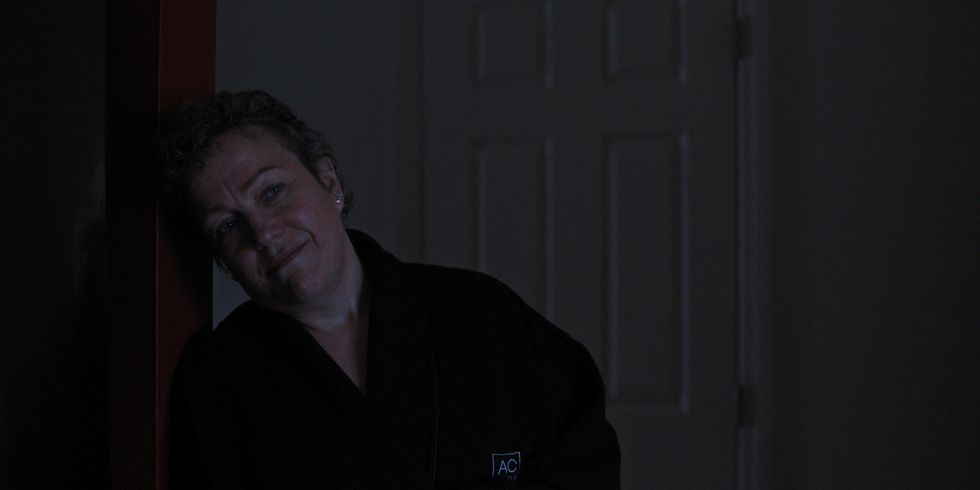
When we sat down to talk, I had sent Santo 30 minutes of that initial rough cut. He said he liked it, and wanted to get it into the upcoming film festival. I had never submitted to a film festival before (my entire life has been marked by poverty in some shape or form, so submission fees were a turn off), so I was hesitant. When he was able to coordinate a screening at a local venue for a few dozen people to come and review an early cut of the film, the feedback was so strong that I decided if I was ever going to submit to a festival, this was most likely my best shot.
In July of 2023, we premiered a “screener” of Ava. It played very well, people liked, woo-hoo. Here’s the rub: the screener was held together with duct tape and prayer. It absolutely would not stand up in a proper theater, and needed to be entirely re-done to play properly.
We had been accepted into the film fest. It was July 14th 2023. Deadline to hand in our film was October 4th, at 4pm. I had 83 days to re-edit, color, mix, and master a film. Also we hadn’t started scoring yet.
Over those 83 days, I lost 20lbs, had an audio hallucination, slept an average 5 hours a night, and of course worked a full time job. The final DCP started exporting at 7am on October 4th, and finished eleven minutes before the deadline of 4pm.
This is absolutely, 100 percent, NOT how anyone should make a film. Pressure can be good, but this wasn’t pressure, this was distress. I liken it to the famously crunch-ridden development of Halo 2, where the company responsible for the game spent 18 months making a 5 minute demo, then had to make the rest of the game in the next 18 months.
It is impossible, it is overly taxing, and it is not something I will ever be repeating. However, it did work.
We handed in the DCP, and set the date for the October 27th premiere. During the next 20 or so days, I sent emails, handed out hand-written invitations, and had Santo, my other producer Vero, Austin, and the entire cast do the same.
Three nights before the premiere, I got the news that we had completely sold out the 125-seat theater, the second film in FilmFEST history to do so. Among the audience was my wife, closest friends, an ex-girlfriend I hadn’t spoken to in nearly a decade, and two teachers who were key to me pursuing filmmaking.
It was almost hilarious how well the premiere went. At the end, we all went home, and enjoyed the next two days of watching movies. During the awards ceremony, Ava came home with three: Best Actress for Olivia Gardella, Best Made In Reading Film, and People’s Choice. This was also the most of any film at the festival. I didn’t know we were eligible for any awards until my name was called.
At the end of all that, you’d think that I’d finally have a reason to be happy, and to feel good about the work we’d done. Instead, it was very much the opposite.
[4K] Ava - Official Teaser Trailerwww.youtube.com
Part 8: What Now?
I am no one. Why do I have an article on No Film School? How did I get to talk with Noam Kroll? Why have I written so much about this film that so few people will ever see?
When Ava premiered, my life goal was reached, with all the bells and whistles I would never have dared to hope for. My only goal since I was a kid was to make a film, and maybe maybe show it in a theater somewhere. I just did it. Then it was Monday morning, and I went back to work. Now what?
Well, the answer whether I liked it or not was the onset of a complete breakdown. 2024 started with the film I had hoped to shoot in summer 2024 getting delayed (for good reasons), and I was laid off.
With my life’s purpose fulfilled, no job, no project to throw myself into, and all my coping mechanisms quickly disintegrating, I found myself having to redefine who I am both as a person and as a filmmaker.
During this incredible low point, having nothing to lose and no real pride to bruise, I reached out to Noam Kroll. Miraculously, he was free and agreed to talk to me.
A few weeks later, I reached out to GG Hawkins on a whim, and now I’m writing for No Film School. I submitted to film festivals using earnings from Ava’s second showing back in December, and am now awaiting those inevitable rejections but also maybe an acceptance.
My life as it is today is something I couldn’t have pictured even six months ago when Ava premiered. Six months before that, I could never have pictured showing Ava in a theater, let alone a sold-out one, let alone to good reviews.
I think the point of this last part of the article is to say that I, like most people I presume, have no way of knowing what’s coming. For better or worse, it will be a surprise to me where I am in another six months. But my intention is now to ask the questions, reach out to the strangers I admire, and keep pushing to do more in film than I have before.
If I’m not good enough, or if the time isn’t right, they will tell me no. But that’s okay. I’d rather let other people tell me no, then tell myself no before I ever tried.
Good luck.

 "'Back Home"via Mercedes Arutro
"'Back Home"via Mercedes Arutro 'Back Home'via Mercedes Arutro
'Back Home'via Mercedes Arutro 









